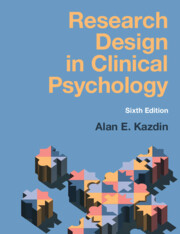Refine search
Actions for selected content:
36901 results in Cambridge Textbooks
Appendix E - Vector Calculus and Maxwell’s Equations
-
- Book:
- Applied Quantum Mechanics
- Published online:
- 27 October 2023
- Print publication:
- 31 August 2023, pp 538-540
-
- Chapter
- Export citation
Appendix - Support Vector Machines (SVMs)
-
- Book:
- Adversarial Learning and Secure AI
- Published online:
- 07 September 2023
- Print publication:
- 31 August 2023, pp 322-332
-
- Chapter
- Export citation
6 - Quantum Probabilities
- from Part II - The Principles of Quantum Theory
-
- Book:
- Quantum Theory
- Published online:
- 06 October 2023
- Print publication:
- 31 August 2023, pp 139-168
-
- Chapter
- Export citation
Part IV - Techniques
-
- Book:
- Quantum Theory
- Published online:
- 06 October 2023
- Print publication:
- 31 August 2023, pp 439-566
-
- Chapter
- Export citation
10 - Test-Time Detection of Backdoor Triggers
-
- Book:
- Adversarial Learning and Secure AI
- Published online:
- 07 September 2023
- Print publication:
- 31 August 2023, pp 246-255
-
- Chapter
- Export citation
Notation
-
- Book:
- Adversarial Learning and Secure AI
- Published online:
- 07 September 2023
- Print publication:
- 31 August 2023, pp xvii-xx
-
- Chapter
- Export citation
11 - Backdoors for 3D Point Cloud (PC) Classifiers
-
- Book:
- Adversarial Learning and Secure AI
- Published online:
- 07 September 2023
- Print publication:
- 31 August 2023, pp 256-280
-
- Chapter
- Export citation
Appendix B - Geometry
-
- Book:
- Applied Quantum Mechanics
- Published online:
- 27 October 2023
- Print publication:
- 31 August 2023, pp 527-529
-
- Chapter
- Export citation
1 - Background
-
- Book:
- Analysing English Sentence Structure
- Published online:
- 16 September 2023
- Print publication:
- 31 August 2023, pp 1-68
-
- Chapter
- Export citation
Reviews
-
- Book:
- Adversarial Learning and Secure AI
- Published online:
- 07 September 2023
- Print publication:
- 31 August 2023, pp ii-ii
-
- Chapter
- Export citation
Appendix H - Classical Mechanics and Classical Electromagnetism
-
- Book:
- Applied Quantum Mechanics
- Published online:
- 27 October 2023
- Print publication:
- 31 August 2023, pp 546-595
-
- Chapter
- Export citation
14 - Reverse-Engineering Attacks (REAs) on Classifiers
-
- Book:
- Adversarial Learning and Secure AI
- Published online:
- 07 September 2023
- Print publication:
- 31 August 2023, pp 315-321
-
- Chapter
- Export citation
Preface to the First Edition
-
- Book:
- Applied Quantum Mechanics
- Published online:
- 27 October 2023
- Print publication:
- 31 August 2023, pp xvii-xviii
-
- Chapter
- Export citation
10 - Quantum–Classical Correspondence
- from Part II - The Principles of Quantum Theory
-
- Book:
- Quantum Theory
- Published online:
- 06 October 2023
- Print publication:
- 31 August 2023, pp 248-270
-
- Chapter
- Export citation
Index
-
- Book:
- Quantum Theory
- Published online:
- 06 October 2023
- Print publication:
- 31 August 2023, pp 659-662
-
- Chapter
- Export citation
Appendix C - Useful Mathematical Relations
-
- Book:
- Applied Quantum Mechanics
- Published online:
- 27 October 2023
- Print publication:
- 31 August 2023, pp 530-535
-
- Chapter
- Export citation
About This Book: For Instructors
-
- Book:
- The Science of Romantic Relationships
- Published online:
- 17 August 2023
- Print publication:
- 31 August 2023, pp xv-xix
-
- Chapter
- Export citation
9 - Managing Stress and Supporting Growth
- from Part III - Relationship Maintenance
-
- Book:
- The Science of Romantic Relationships
- Published online:
- 17 August 2023
- Print publication:
- 31 August 2023, pp 308-342
-
- Chapter
- Export citation

Research Design in Clinical Psychology
-
- Published online:
- 25 August 2023
- Print publication:
- 07 September 2023
-
- Textbook
- Export citation

The Sounds of English Around the World
- An Introduction to Phonetics and Phonology
-
- Published online:
- 25 August 2023
- Print publication:
- 14 September 2023
-
- Textbook
- Export citation
